
Le Morne: Mauritius' Serene Coastal Gem
Discover the serene beauty of Le Morne in Mauritius, where pristine beaches, thrilling water sports, and a rich cultural history await you.
Le Morne, a stunning peninsula located on the southwestern tip of Mauritius, is a paradise for nature lovers and adventure seekers alike. The area is dominated by the majestic Le Morne Brabant mountain, a UNESCO World Heritage site, which stands as a symbol of freedom and resilience. This iconic landmark offers breathtaking views of the Indian Ocean and is a popular spot for hiking enthusiasts. The lush greenery and crystal-clear waters surrounding Le Morne make it an ideal destination for beachgoers and water sports aficionados. The beaches of Le Morne are some of the most pristine and tranquil in Mauritius. With soft white sand and turquoise waters, they provide the perfect backdrop for a relaxing day under the sun. The lagoon here is perfect for swimming, snorkeling, and diving, offering a glimpse into the vibrant marine life that inhabits the area. Kitesurfing and windsurfing are also popular activities, thanks to the steady trade winds that sweep across the peninsula. Beyond its natural beauty, Le Morne boasts a rich cultural history. The mountain served as a refuge for escaped slaves in the 18th and early 19th centuries, and today, it stands as a poignant reminder of their struggle for freedom. Visitors can explore the Slave Route Monument and the International Slave Route Conference Site to learn more about this significant part of Mauritius' history. The nearby village of Le Morne also offers a glimpse into local life, with its charming markets, vibrant festivals, and delicious Creole cuisine.
Local tips in Le Morne
- Visit Le Morne Brabant in the early morning for the best hiking experience and to avoid the midday heat.
- Pack reef-safe sunscreen to protect the delicate marine ecosystem while enjoying water activities.
- Try the local Creole cuisine at small eateries in the village for an authentic taste of Mauritius.
- Check the wind conditions in advance if you plan to kitesurf or windsurf to ensure optimal conditions.
- Hire a local guide when exploring historical sites to gain deeper insights into the area's cultural significance.
Le Morne: Mauritius' Serene Coastal Gem
Le Morne, a stunning peninsula located on the southwestern tip of Mauritius, is a paradise for nature lovers and adventure seekers alike. The area is dominated by the majestic Le Morne Brabant mountain, a UNESCO World Heritage site, which stands as a symbol of freedom and resilience. This iconic landmark offers breathtaking views of the Indian Ocean and is a popular spot for hiking enthusiasts. The lush greenery and crystal-clear waters surrounding Le Morne make it an ideal destination for beachgoers and water sports aficionados. The beaches of Le Morne are some of the most pristine and tranquil in Mauritius. With soft white sand and turquoise waters, they provide the perfect backdrop for a relaxing day under the sun. The lagoon here is perfect for swimming, snorkeling, and diving, offering a glimpse into the vibrant marine life that inhabits the area. Kitesurfing and windsurfing are also popular activities, thanks to the steady trade winds that sweep across the peninsula. Beyond its natural beauty, Le Morne boasts a rich cultural history. The mountain served as a refuge for escaped slaves in the 18th and early 19th centuries, and today, it stands as a poignant reminder of their struggle for freedom. Visitors can explore the Slave Route Monument and the International Slave Route Conference Site to learn more about this significant part of Mauritius' history. The nearby village of Le Morne also offers a glimpse into local life, with its charming markets, vibrant festivals, and delicious Creole cuisine.
When is the best time to go to Le Morne?
Iconic landmarks you can’t miss
Le Morne Public Beach
Explore the serene beauty of Le Morne Public Beach in Mauritius, a perfect blend of white sands, azure waters, and cultural heritage.
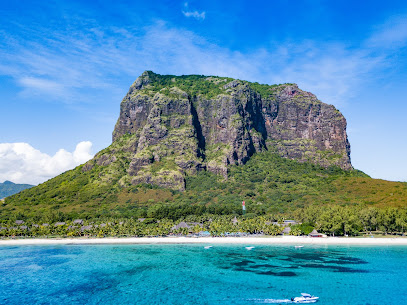
Wapalapam Island Eatery
Experience the vibrant flavors of Mauritius at Wapalapam Island Eatery in Le Morne Brabant, where culinary delights meet island charm.
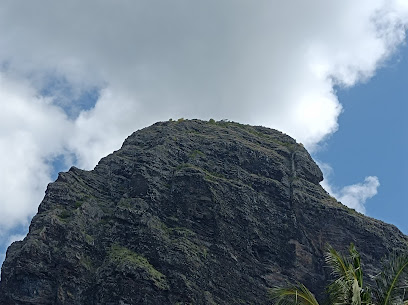
Ebony Forest Reserve Chamarel
Discover the breathtaking beauty of Ebony Forest Reserve Chamarel, a serene ecological park in Mauritius with stunning views and diverse wildlife.
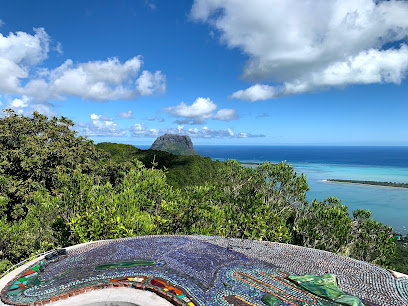
Le Morne Brabant
Discover the breathtaking beauty and rich heritage of Le Morne Brabant, a UNESCO World Heritage Site in Mauritius, perfect for adventure and relaxation.

Le Morne World Heritage Site
Experience the breathtaking beauty and rich history of Le Morne World Heritage Site, a UNESCO treasure on the stunning island of Mauritius.
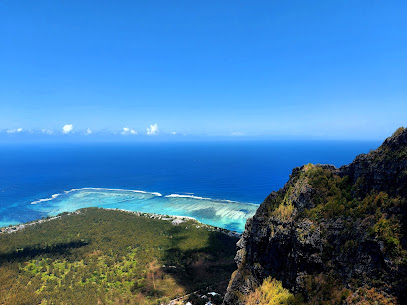
Explorers Mauritius
Discover the breathtaking beauty of Explorers Mauritius, an adventure haven nestled in Le Morne Brabant, perfect for nature lovers and thrill-seekers.

Le Morne Beach
Discover the serene beauty of Le Morne Beach, where soft sands meet crystal-clear waters in a tropical paradise perfect for relaxation and adventure.
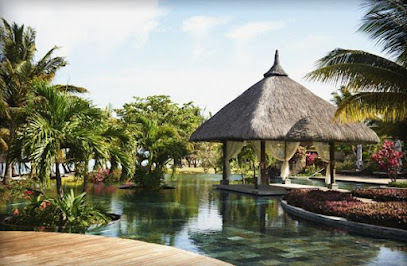
Plage Du MORNE
Discover the serene beauty of Plage Du Morne, a tropical beach pavilion in Mauritius, perfect for relaxation, water sports, and cultural experiences.

Matteo Mauritius Dolphins Excursions
Discover the thrill of swimming with dolphins in breathtaking Mauritius, a perfect blend of adventure and natural beauty at Le Morne Brabant.

Slave Route Monument
Explore the Slave Route Monument in Le Morne, a UNESCO World Heritage site honoring the resilience of enslaved individuals against the backdrop of stunning landscapes.
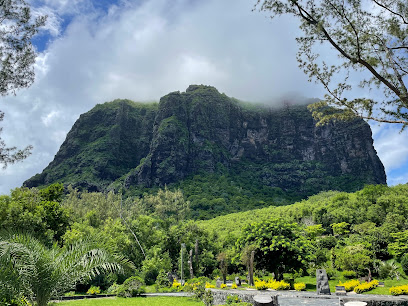
L'embrasure
Discover L'Embrasure, an enchanting event venue in Le Morne, Mauritius, offering stunning views and exceptional service for unforgettable celebrations.
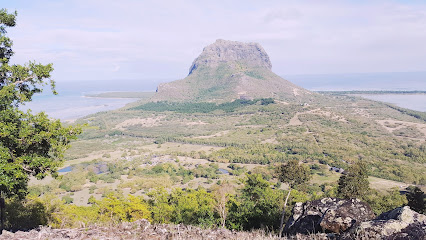
Kozy Le Morne
Discover the tranquil beauty of Kozy Le Morne, a charming hotel in Le Morne, Mauritius, offering stunning lagoon views and comfortable accommodations.
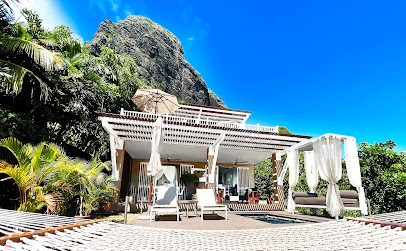
HARAS DU MORNE ECO TOURIST
Discover the thrill of adventure at Haras Du Morne Eco Tourist, where breathtaking landscapes and horseback riding experiences await.
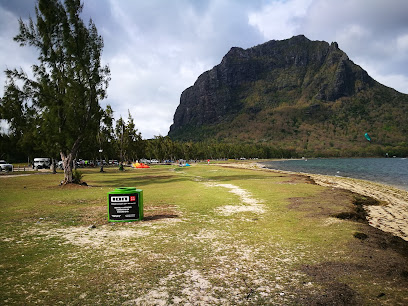
Ma Vie La
Discover the serenity of Ma Vie La, a luxurious villa in Le Morne, Mauritius, surrounded by stunning landscapes and inviting beaches.

Picnic on the Island
Discover the idyllic beauty of Île aux Benitiers, a serene picnic destination surrounded by stunning waters and lush greenery, perfect for relaxation and adventure.
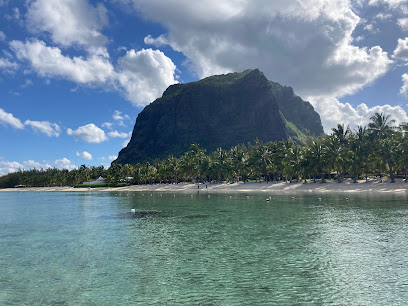
Unmissable attractions to see
Chamarel Seven Colored Earth Geopark
Discover the mesmerizing Chamarel Seven Colored Earth Geopark, a vibrant natural wonder in Mauritius, showcasing stunning multi-colored dunes and breathtaking landscapes.
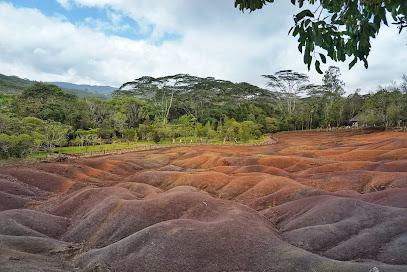
La Vallée Des Couleurs Nature Park
Explore La Vallée Des Couleurs Nature Park in Mauritius, where vibrant landscapes meet thrilling adventures and delightful dining experiences.

Casela Nature Parks | Best Nature Parks in Mauritius
Experience the breathtaking beauty and thrilling adventures at Casela Nature Parks, Mauritius's premier destination for wildlife and outdoor activities.
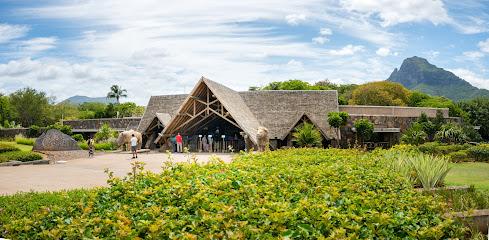
Chamarel Waterfall
Discover the breathtaking Chamarel Waterfall, a natural wonder in Mauritius surrounded by lush landscapes and vibrant local culture.
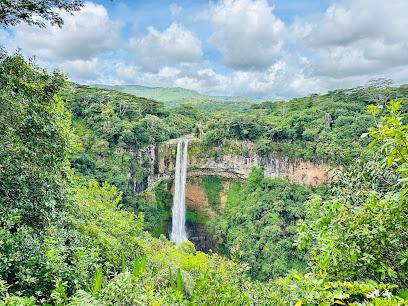
La Vanille Nature Park
Explore La Vanille Nature Park, a lush animal park in Riviere des Anguilles, Mauritius, featuring diverse wildlife, conservation efforts, and family-friendly attractions.

Flic En Flac Beach
Discover the allure of Flic En Flac Beach, a stunning tropical paradise in Mauritius, perfect for relaxation, adventure, and unforgettable sunsets.
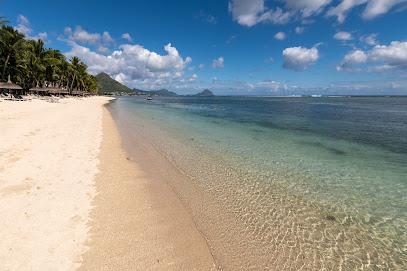
Black River Gorges National Park
Explore Black River Gorges National Park, a breathtaking natural paradise in Mauritius, with lush forests, stunning waterfalls, and incredible wildlife.
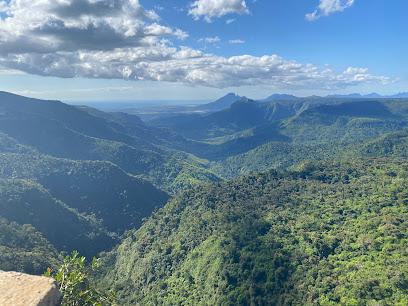
Gris Gris Beach
Experience the breathtaking beauty of Gris Gris Beach in Souillac, a tranquil haven of cliffs, azure waters, and natural serenity on the shores of Mauritius.
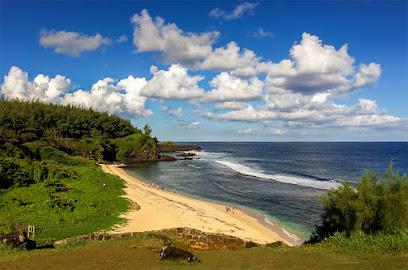
Curious Chamarel
Explore the breathtaking landscapes and unique geological wonders of Curious Chamarel, a must-visit tourist attraction in Mauritius.

Le Morne Public Beach
Le Morne Public Beach: A breathtaking tropical escape with stunning views, perfect for relaxation and thrilling water sports on the shores of Mauritius.
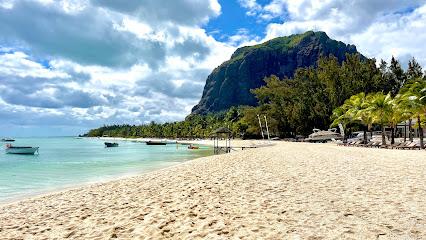
Grand Bassin
Explore Grand Bassin, a sacred lake in Mauritius offering serene beauty, rich culture, and spiritual significance in a breathtaking natural setting.
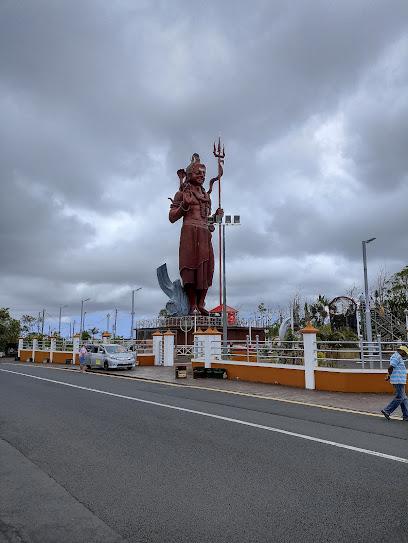
Bois Cheri Tea Factory
Experience the rich heritage of tea-making at Bois Cheri Tea Factory, surrounded by breathtaking scenery and lush tea plantations in Mauritius.
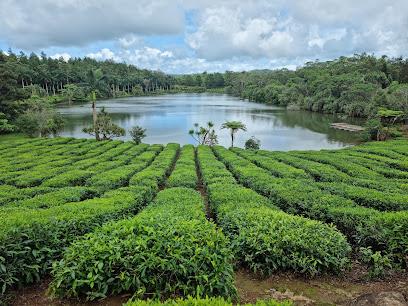
Rochester Falls
Experience the breathtaking beauty of Rochester Falls, a serene natural wonder in Mauritius perfect for nature lovers and photographers.
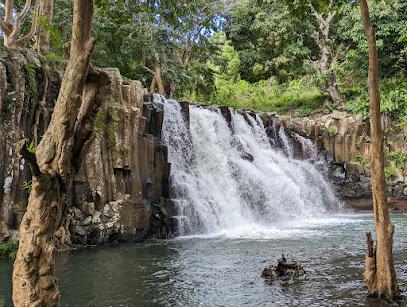
Maconde Viewpoint
Discover the stunning beauty of Maconde Viewpoint in Mauritius, where breathtaking ocean views and lush landscapes await every traveler.
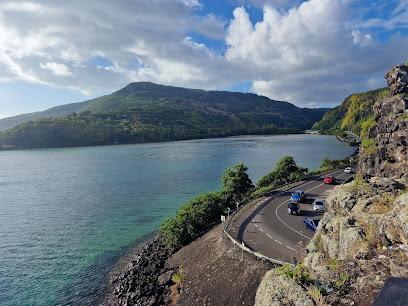
Alexandra Falls
Explore Alexandra Falls in Mauritius, a stunning natural attraction surrounded by lush landscapes and vibrant wildlife, perfect for nature lovers and photographers.
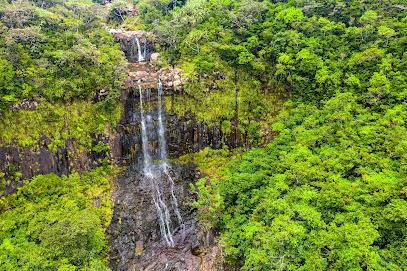
Essential places to dine
Wapalapam Island Eatery
Experience delectable Mauritian cuisine at Wapalapam Island Eatery in Le Morne Brabant - a culinary paradise for every traveler.

Emba Filao Restaurant
Experience authentic Mauritian flavors at Emba Filao Restaurant in Le Morne—where fresh seafood meets stunning ocean views.
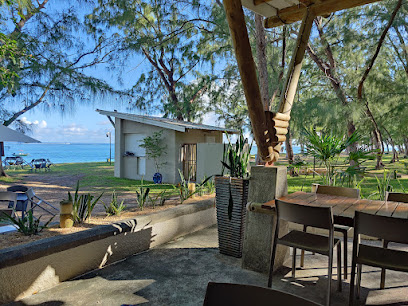
Blue Marlin
Experience exquisite flavors and breathtaking views at Blue Marlin in Le Morne, Mauritius – a must-visit dining destination.
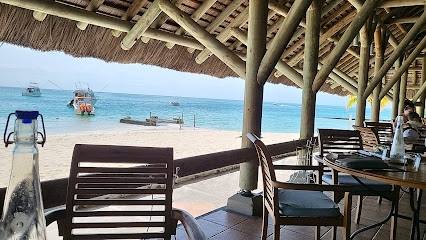
La Ravanne
Experience authentic Mauritian cuisine at La Ravanne - where every dish tells a story of tradition and flavor.
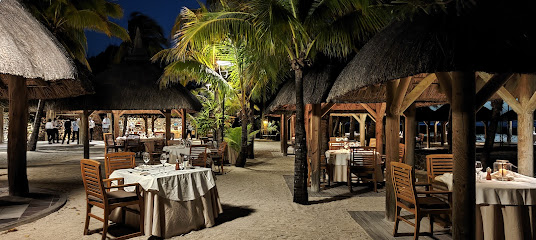
Le Brabant
Experience culinary excellence at Le Brabant in Le Morne - where stunning views meet delectable flavors.
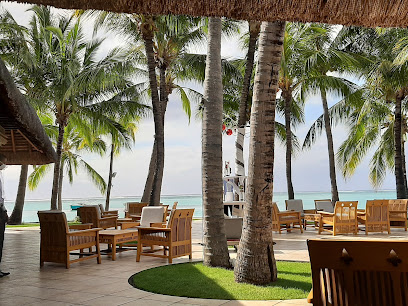
Green & Bistrot
Experience authentic Mauritian cuisine at Green & Bistrot with stunning views and a warm ambiance perfect for every traveler.
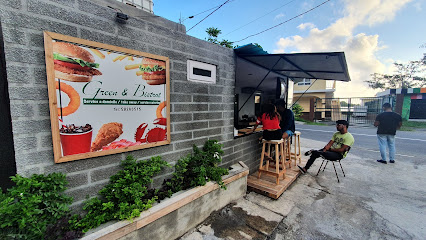
L'Harmonie
Experience exquisite Mauritian cuisine with breathtaking ocean views at L'Harmonie in Le Morne.
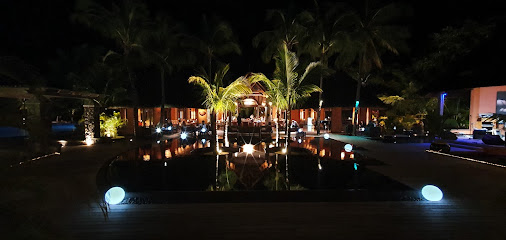
East
Discover culinary excellence at East in Le Morne – where local flavors meet exquisite dining in a breathtaking setting.
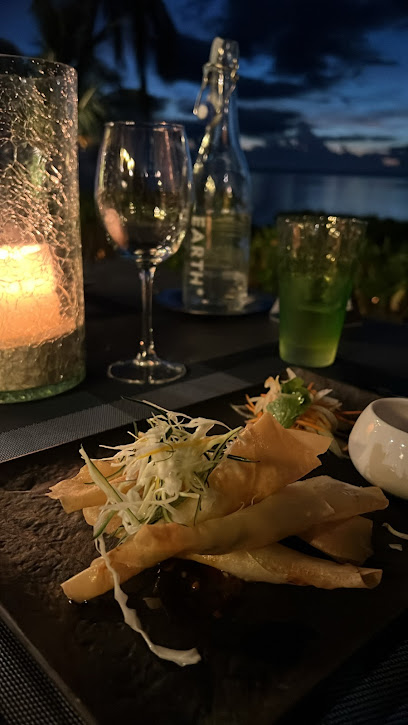
The Boathouse Bar & Grill
Experience delectable cuisine with stunning ocean views at The Boathouse Bar & Grill in Le Morne Brabant.
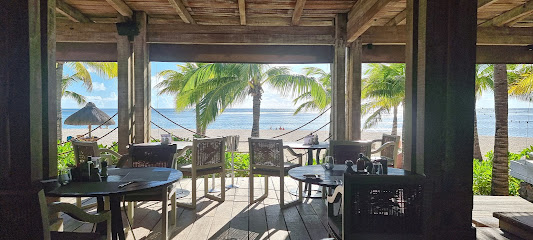
Simply India
Discover authentic Indian cuisine at Simply India in Le Morne – where every dish tells a story of tradition and flavor.
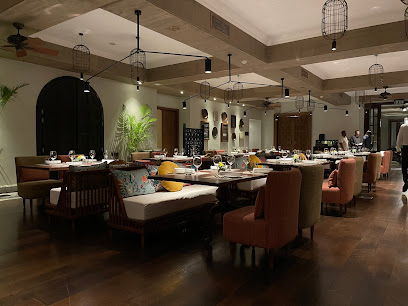
Umami
Experience authentic Japanese cuisine at Umami in Le Morne Brabant, where stunning views meet exquisite flavors for an unforgettable dining experience.
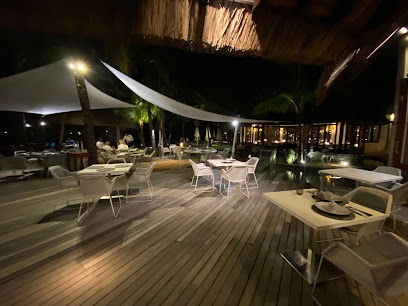
Floating Market Restaurant
Discover the taste of Thailand at Floating Market Restaurant in Le Morne Brabant – where authentic flavors meet breathtaking views.
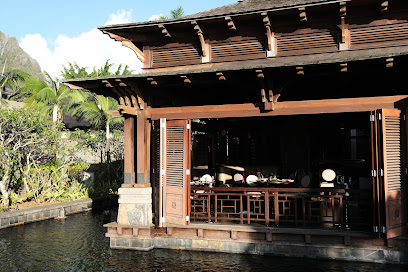
Dina's
Experience exquisite local cuisine at Dina's in Dinarobin Beachcomber Resort while enjoying breathtaking ocean views.
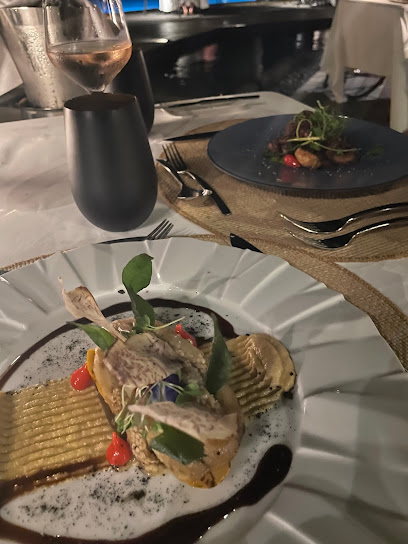
The Kitchen
Discover the vibrant culinary scene at The Kitchen in Le Morne with daily themed menus showcasing diverse global flavors.
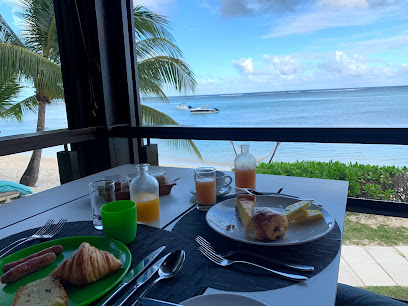
Le Plage (Restarant Dinarobin Beachcomber)
Experience family-friendly dining at Le Plage in Dinarobin Beachcomber—where exquisite flavors meet stunning ocean views.

Markets, malls and hidden boutiques
Port Louis Waterfront by Landscope Mauritius
Experience the vibrant shopping and dining at Port Louis Waterfront, the coastal gem of Mauritius with stunning views and rich local culture.
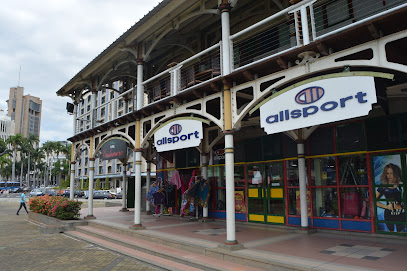
Mont Choisy Le Mall
Explore Mont Choisy Le Mall in Grand Baie, Mauritius – a shopping and dining oasis offering a delightful blend of local and international brands.
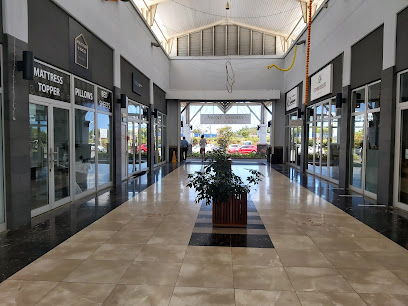
Wapalapam Island Eatery
Experience the rich flavors of Mauritius at Wapalapam Island Eatery, where every dish tells a story of the island's vibrant culinary heritage.
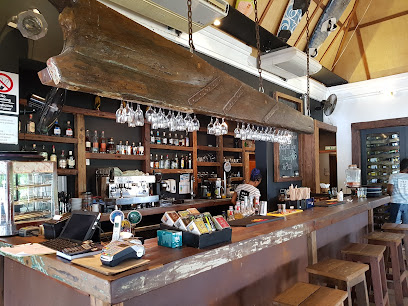
GSR La Gaulette Supermarket
Experience the flavors of Mauritius at GSR La Gaulette Supermarket, your one-stop shop for local produce and unique culinary delights.
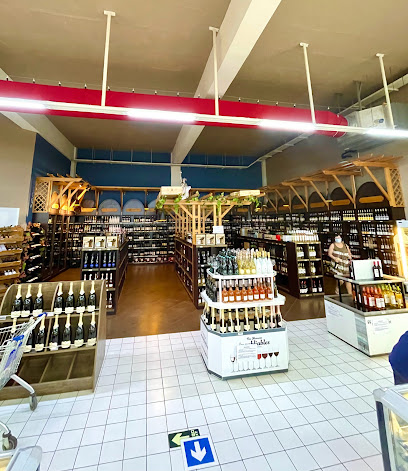
Ruisseau Creole
Discover the vibrant shopping and cultural experience at Ruisseau Creole in La Preneuse, Mauritius, with unique boutiques and delicious local cuisine.
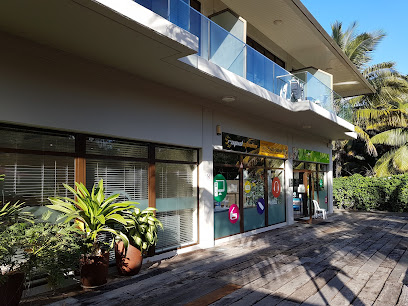
Éditions Le Printemps- Curepipe
Discover a literary treasure in Curepipe at Éditions Le Printemps, where books and culture come alive in a cozy and welcoming atmosphere.
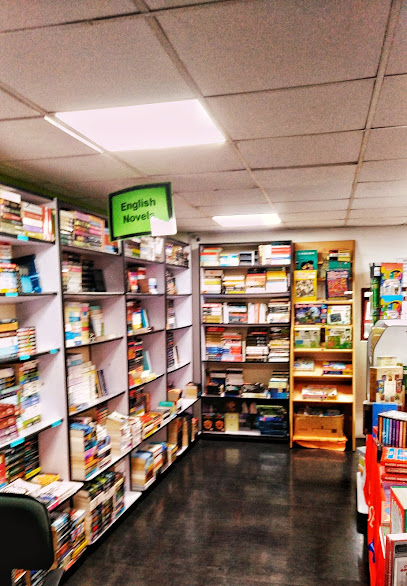
TiGadget Curepipe Gift Shop
Discover unique Mauritian gifts and local crafts at TiGadget Curepipe Gift Shop, the perfect stop for tourists seeking memorable souvenirs.
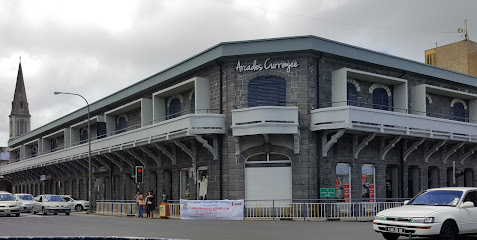
La Bonne Fouille Factory Shop
Discover the charm of local fashion at La Bonne Fouille Factory Shop in Curepipe, where unique designs meet quality craftsmanship.
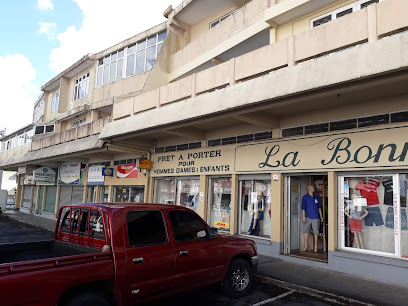
ION CLUB Le Morne Windsurf Center
Experience the ultimate windsurfing adventure at ION CLUB Le Morne, where stunning landscapes meet thrilling water sports.
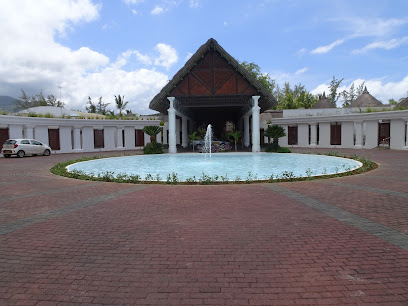
Kala Store
Explore the flavors of Mauritius at Kala Store, a charming grocery store in Curepipe offering local products and a taste of island life.

Le Reef Shop
Explore Le Reef Shop in La Gaulette, Mauritius - your ultimate surf destination with expert advice and top-quality gear for ocean adventures.

La gaulette Kite Repair
Discover La Gaulette Kite Repair: the ultimate destination for kiteboarding enthusiasts seeking expert repairs and local kite gear in Mauritius.

Jetha Tulsidas
Explore Jetha Tulsidas for unique gifts and local fashion in Curepipe, Mauritius, featuring exquisite clothing and accessories for every occasion.
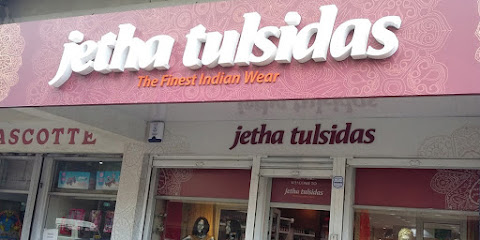
Down South Surf Shop
Explore the best of surfing at Down South Surf Shop in La Gaulette, Mauritius – your gateway to ocean adventures and quality surf gear.
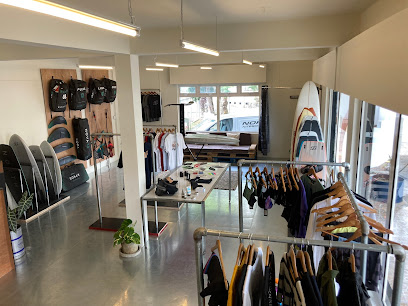
Pryde Shop
Explore the best of water sports at Pryde Shop in La Gaulette, Mauritius – your go-to for quality surf apparel and sporting goods.
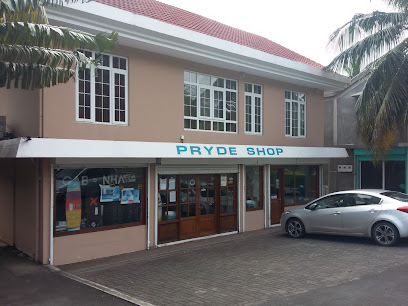
Essential bars & hidden hideouts
Wapalapam Island Eatery
Discover the flavors of Mauritius at Wapalapam Island Eatery in Le Morne Brabant, where local ingredients meet culinary excellence.
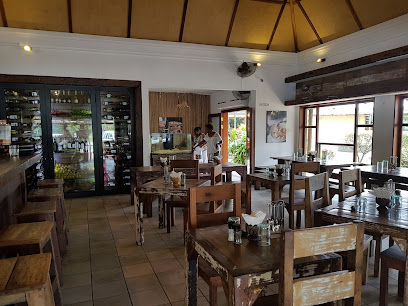
Big Willy's
Experience the vibrant culinary and nightlife scene at Big Willy's in Tamarin, Mauritius, where delicious tapas meet lively entertainment.
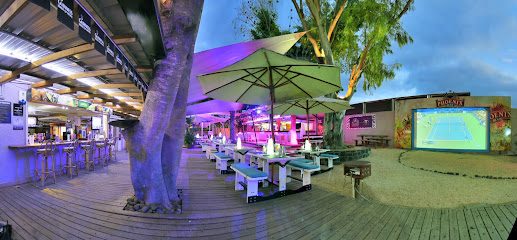
Enso Restaurant & Lounge Bar
Discover Enso Restaurant & Lounge Bar in La Gaulette – a vibrant dining destination blending local flavors with a stunning atmosphere.
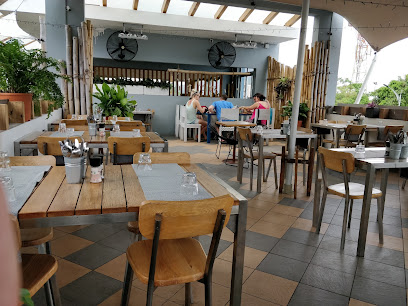
Varangue Sur Morne
Discover the culinary artistry of Mauritius at Varangue Sur Morne, where exquisite flavors meet breathtaking views for a memorable dining experience.
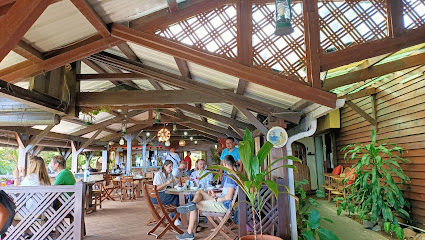
Emba Filao Restaurant
Experience the vibrant flavors of Mauritius at Emba Filao Restaurant, where culinary excellence meets stunning beach views in Le Morne.
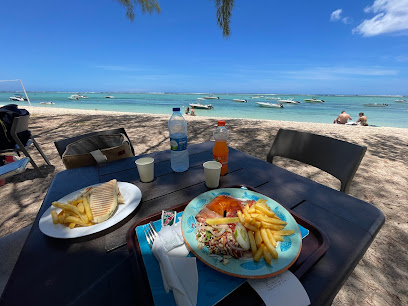
Kot Zanane Food Adventure kiltir loft
Experience the flavors of Mauritius at Kot Zanane Food Adventure in Le Morne Brabant, where every dish tells a story of local tradition and freshness.
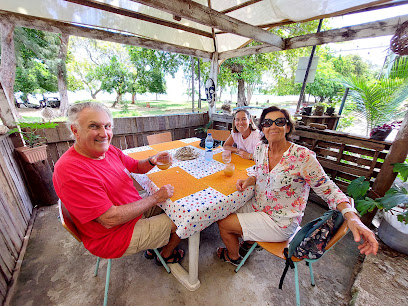
Blue Marlin
Discover Blue Marlin, where exquisite local cuisine meets stunning ocean views in the heart of Le Morne, Mauritius.
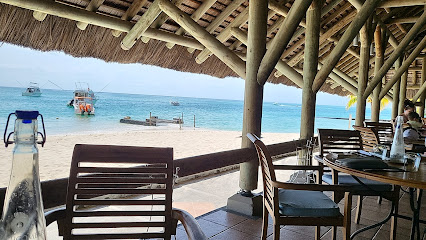
La Ravanne
Experience the rich flavors of Mauritius at La Ravanne, where authentic cuisine meets a charming atmosphere for an unforgettable dining experience.
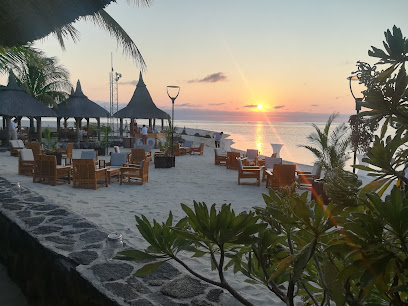
Le Brabant
Experience the culinary delights of Le Brabant in Le Morne, Mauritius, where local flavors meet breathtaking views in a charming atmosphere.
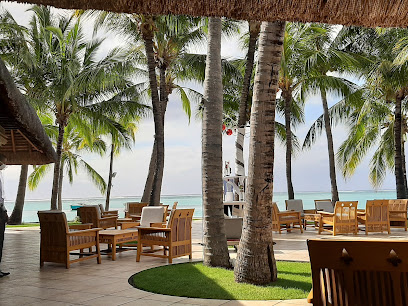
Gregory's Secret Restaurant
Discover the flavors of Mauritius at Gregory's Secret Restaurant, a hidden culinary gem in La Gaulette offering a unique dining experience.
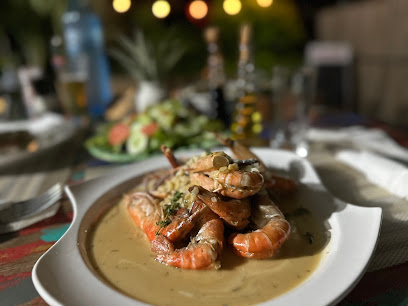
Moon Bar’k
Discover the vibrant atmosphere and stunning views at Moon Bar’k, a must-visit bar and restaurant in the heart of Mauritius.
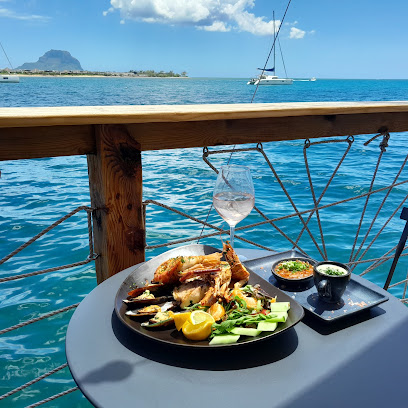
Green & Bistrot
Discover the culinary wonders of Mauritius at Green & Bistrot, where local flavors meet international cuisine in a beautiful setting.
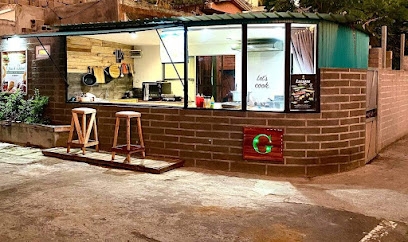
Moustache Bistro
Discover the vibrant flavors of Tamarin at Moustache Bistro, where exquisite tapas and fine wines create an unforgettable dining experience.
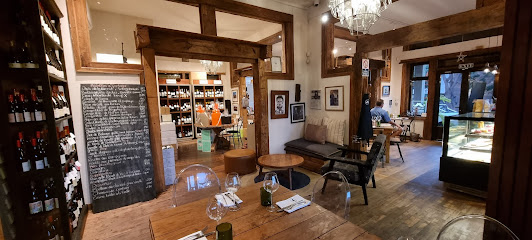
L'Harmonie
Experience culinary bliss at L'Harmonie in Le Morne, where fresh local flavors meet stunning ocean views for an unforgettable dining experience.
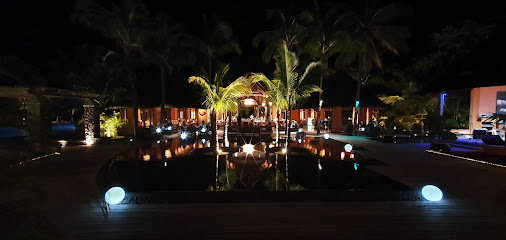
Le Morne Beach Bar
Experience tropical bliss at Le Morne Beach Bar in Flic en Flac, Mauritius, where fresh seafood meets stunning ocean views.
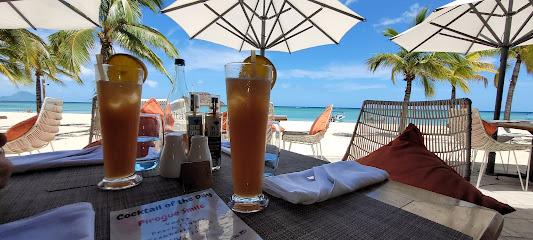
Local Phrases
-
- HelloBonjour
[Bon-zhoor] - GoodbyeAu revoir
[Oh rev-wah] - YesOui
[Wee] - NoNon
[Non] - Please/You're welcomeS'il vous plaît/De rien
[Seel voo pleh/Dee ree-en] - Thank youMerci
[Mehr-see] - Excuse me/SorryExcusez-moi/Désolé
[Ex-koo-zay mwah/Day-zoh-lay] - How are you?Comment ça va?
[Koh-mon sah vah] - Fine. And you?Bien. Et toi?
[Byen. Ay twah] - Do you speak English?Parlez-vous anglais?
[Par-lay voo ahn-glay] - I don't understandJe ne comprends pas
[Zhuh nuh kohm-prahnd pah]
- HelloBonjour
-
- I'd like to see the menu, pleaseJe voudrais voir le menu, s'il vous plaît
[Zhuh voo-dray vwar luh meh-noo, seel voo pleh] - I don't eat meatJe ne mange pas de viande
[Zhuh nuh mahnj pah deh vee-and] - Cheers!Santé!
[San-tay] - I would like to pay, pleaseJe voudrais payer, s'il vous plaît
[Zhuh voo-dray pay-ay, seel voo pleh]
- I'd like to see the menu, pleaseJe voudrais voir le menu, s'il vous plaît
-
- Help!Au secours!
[Oh seh-coor] - Go away!Allez-vous en!
[Ah-lay voo ahn] - Call the Police!Appelez la police!
[Ah-peh-lay lah poh-lees] - Call a doctor!Appelez un docteur!
[Ah-peh-lay ahn dawk-tuhr] - I'm lostJe suis perdu
[Zhuh swee pair-doo] - I'm illJe suis malade
[Zhuh swee mah-lahd]
- Help!Au secours!
-
- I'd like to buy...Je voudrais acheter...
[Zhuh voo-dray ash-tay...] - I'm just lookingJe regarde juste
[Zhuh ruh-gard zhust] - How much is it?Combien ça coûte?
[Kohm-byen sah koot] - That's too expensiveC'est trop cher
[Say troh shair] - Can you lower the price?Pouvez-vous baisser le prix?
[Poo-vay voo beh-say luh pree]
- I'd like to buy...Je voudrais acheter...
-
- What time is it?Quelle heure est-il?
[Kell er ay-teel] - It's one o'clockIl est une heure
[Eel ay oon er] - Half past (10)Dix heures et demie
[Deez er ay duh-mee] - MorningMatin
[Ma-tan] - AfternoonAprès-midi
[Ah-pray-mee-dee] - EveningSoir
[Swahr] - YesterdayHier
[Yehr] - TodayAujourd'hui
[Oh-zhoor-dwee] - TomorrowDemain
[Duh-mahn] - 1Un
[Un] - 2Deux
[Deuh] - 3Trois
[Twa] - 4Quatre
[Kat] - 5Cinq
[Sank] - 6Six
[Sees] - 7Sept
[Set] - 8Huit
[Wheat] - 9Neuf
[Nuff] - 10Dix
[Deez]
- What time is it?Quelle heure est-il?
-
- Where's a/the...?Où est le/la...?
[Oo ay luh/lah] - What's the address?Quelle est l'adresse?
[Kell ay lah-dress] - Can you show me (on the map)?Pouvez-vous me montrer (sur la carte)?
[Poo-vay voo muh mohn-tray (surr lah kart)] - When's the next (bus)?Quand est le prochain (bus)?
[Kahnd ay luh proh-shahn (bus)] - A ticket (to ....)Un billet (pour ....)
[Un bee-yay (poor)]
- Where's a/the...?Où est le/la...?
History of Le Morne
-
Le Morne Brabant, a rugged mountain on the southwestern tip of Mauritius, stands as a poignant symbol of resistance against oppression. During the 18th and early 19th centuries, the mountain served as a refuge for runaway slaves, known as Maroons. These escapees fled from the harsh conditions of colonial plantations, seeking freedom and safety in the inaccessible crags and dense forests of Le Morne. The Maroons established small, hidden communities, living off the land and forging a unique culture that blended African, Malagasy, and local influences.
-
In 2008, Le Morne Cultural Landscape was inscribed as a UNESCO World Heritage Site, recognizing its historical significance and the enduring legacy of the Maroons. The designation aimed to preserve the mountain and its surroundings as a memorial to the suffering and resilience of the enslaved people who found sanctuary there. The site now serves as a place of remembrance and education, drawing visitors from around the world to learn about this chapter of human history.
-
Atop the mountain stands the iconic Le Morne Cross, erected to honor the memory of the Maroons and their struggle for freedom. The cross is a significant landmark, symbolizing both the spiritual and physical journeys of those who sought refuge on the mountain. Visitors who undertake the challenging hike to the summit are rewarded with breathtaking panoramic views of the island and the Indian Ocean, as well as a deeper understanding of the historical context of Le Morne.
-
Beyond its historical importance, Le Morne continues to hold cultural significance for the people of Mauritius. The mountain is a site of annual pilgrimages and ceremonies, where locals and visitors alike commemorate the bravery and resilience of the Maroons. Traditional music, dance, and storytelling are integral to these events, keeping the legacy of the Maroons alive and fostering a sense of community and continuity.
-
Le Morne Brabant is not only a historical landmark but also a natural wonder. The mountain and its surrounding areas are home to diverse flora and fauna, some of which are endemic to Mauritius. The lush forests, rocky outcrops, and pristine beaches offer a haven for nature lovers and adventurers. Conservation efforts aim to protect this unique ecosystem, ensuring that future generations can experience the natural beauty that has been intertwined with the island's history.
-
Today, Le Morne is a vibrant area that blends its rich history with modern attractions. The nearby village of Le Morne offers a glimpse into local life, with its bustling markets, traditional cuisine, and welcoming community. The region has also become a popular destination for water sports enthusiasts, particularly kitesurfers, who flock to the area's renowned beaches and ideal wind conditions. Despite its development, Le Morne remains a place where the past and present coexist, offering a unique and immersive experience for all who visit.
Le Morne Essentials
-
Le Morne is located on the southwestern tip of Mauritius. The nearest international airport is Sir Seewoosagur Ramgoolam International Airport (MRU), approximately 60 kilometers away. From the airport, you can hire a taxi, rent a car, or pre-book a shuttle service to reach Le Morne. The drive typically takes around 1.5 hours through scenic routes.
-
While Le Morne is relatively small and many places are within walking distance, having a rental car can be convenient for exploring the surrounding areas and attractions. Taxis are readily available but can be pricey. For a more local experience, consider using the public bus service, which connects Le Morne to other parts of Mauritius. Bicycles and scooters are also popular for short distances and can be rented locally.
-
The official currency in Mauritius is the Mauritian Rupee (MUR). Credit and debit cards are widely accepted in hotels, restaurants, and larger shops. However, it is advisable to carry some cash for smaller establishments and local markets. ATMs are available in nearby towns like La Gaulette, but it’s a good idea to withdraw sufficient cash beforehand.
-
Le Morne is generally a safe destination for tourists. However, it is always wise to take standard precautions. Avoid walking alone at night in secluded areas and be cautious with your belongings in crowded places. While Le Morne itself has a low crime rate, it is advisable to stay vigilant, especially in more tourist-heavy areas.
-
In case of emergency, dial 999 for police assistance, 114 for ambulance services, and 115 for the fire department. The nearest medical facility is the Black River Hospital, approximately 20 kilometers away. It is recommended to have travel insurance that covers medical emergencies. Pharmacies are available in the nearby towns for minor health issues.
-
Fashion: Do dress modestly, especially when visiting religious sites. Avoid wearing overly revealing clothing. Religion: Do respect local customs and traditions. Remove your shoes before entering any religious place. Public Transport: Do be respectful and give up your seat to elderly passengers. Don’t be loud or disruptive. Greetings: Do greet people with a handshake or a polite 'Bonjour.' Eating & Drinking: Do try local dishes and accept food offerings graciously. Don’t waste food, as it's considered impolite.
-
To experience Le Morne like a local, visit the local markets where you can buy fresh produce and traditional Mauritian goods. Engage with locals, who are often friendly and willing to share stories about the area’s history and culture. Don’t miss visiting the Le Morne Brabant Mountain, a UNESCO World Heritage Site, which offers breathtaking views and a rich historical background. For a unique experience, try kite surfing or windsurfing, as Le Morne is renowned for these water sports.
Trending Landmark in Le Morne
-
Le Morne Public Beach
-
Wapalapam Island Eatery
-
Ebony Forest Reserve Chamarel
-
Le Morne Brabant
-
Le Morne World Heritage Site
-
Explorers Mauritius
-
Le Morne Beach
-
Plage Du MORNE
-
Matteo Mauritius Dolphins Excursions
-
Slave Route Monument
-
L'embrasure
-
Kozy Le Morne
-
HARAS DU MORNE ECO TOURIST
-
Ma Vie La
-
Picnic on the Island
Nearby Cities to Le Morne
-
Things To Do in Chamarel
-
Things To Do in Bel Ombre
-
Things To Do in Tamarin
-
Things To Do in Flic en Flac
-
Things To Do in Port Louis
-
Things To Do in Mahebourg
-
Things To Do in Blue Bay
-
Things To Do in Pamplemousses
-
Things To Do in Pointe aux Piments
-
Things To Do in Trou aux Biches
-
Things To Do in Poste de Flacq
-
Things To Do in Belle Mare
-
Things To Do in Riviere du Rempart
-
Things To Do in Grand Baie
-
Things To Do in Grand Gaube










